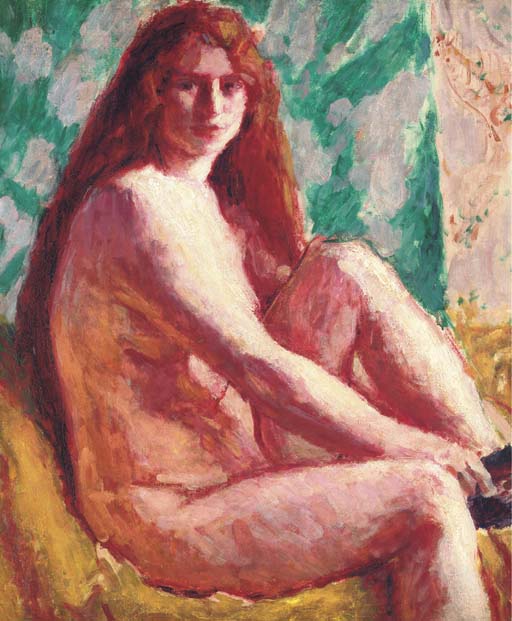An Appreciation: Roderic O'Connor Roderic O'Connor self-portrait Roderic O'Connor self-portrait
Roderic O'Connor was an Irish artist at the turn of the 20th century. He spent much of his career in France where he was influenced by Impressionist and Post-Impressionist art. Ue developed his own unique style and is considered a leading Irish artist of this period.
Born in Roscommon, Ireland in October 1860, O'Connor came from a prosperous family. His father was a landowner who sometimes acted as a justice of the peace. His family subsidized his artistic career, thus freeing him from having to sell his art to make a living. O'Connor studied art at Dublin's Metropolitan School and later at the Royal Hibernian Academy. He then continued his education at Ampleforth College in England. As did many young Irish artists of this period, O'Connor felt that his education would not be complete without some study on the continent so he enrolled at Academe Royale des Beaux-Arts at Antwerp for a year. After a two year respite in Ireland, O'Connor traveled to Paris, then the art capital of the world - - to expand his studies in 1886. There he studied under the portrait painter Carolus-Duran and at the Académie Julian. In 1887, O'Connor shifted his base to Brittany. The town of Pont Aven had become popular with young avant garde artists largely because Paul Gauguin had used it as a base for a time. O'Connor eventually met Gauguin and the two artists became friends. O'Connor may also have met Gauguin's friend Vincent Van Gogh around this time. In any event, O'Connor was clearly influenced by Van Gogh's work during this period. Along with a number of other Irish artists including Frank O'Mera and John Lavery, O'Connor also participated in the artists colony at Grez-sur-Loing southwest of Paris. O'Connor did not like the process of exhibiting his work, he began to show works at the Salon des Indépendants in 1890. His father's death in 1893, left O'Connor a considerable inheritance and so he rarely exhibited his works. Most sales of his works were done privately, directly from artist to collector. Early in the new century, O'Connor returned to Paris setting up a studio in Montparnasse. Although something of a recluse, O'Connor mixed with a group of Anglo-American ex-pats who met at the nearby Chat Blanc café. One of these people was Somerset Maugham. O'Connor did not like Maugham was always attacking him. The writer retaliated by unflatteringly modeling characters in The Magician and in Of Human Bondage on O'Connor. Nonetheless, Maugham purchased several of O'Connor's works. By this time, O'Connor's style had developed a unique style of his own that went beyond paying tribute to his Post-Impressionist mentors. In 1910, O'Connor came into his full inheritance. This enabled him to travel and he spent time in Spain and in the South of France. Around this time, his style changed again, becoming more diverse and less intense. During World War I, O'Connor continued to live in Montparnasse. He did not care for the new avant garde art and was openly critical of Pablo Picasso and Henri Matisse. During the next two decades, O'Connor's own output diminished so that he was doing little painting during the last decade of his life. Around 1916, he began a relationship with one of his models Renee Honta (also known as Henrietta). She was 34 years younger than O'Connor. Nonetheless, they stayed together and were married in 1933. The couple purchased a large house in Nueil-sur-Layon in the Loire. Aside from trips to Spain, they would live there until O'Connor's death in 1940. Because he rarely exhibited and because most of his works were sold privately, O'Connor's work was not that well-known during his lifetime. However, interest in his work grew as the original owners passed away and their their purchases came on the market. Following the death of Renaee in 1955, a large number of works were discovered and O'Connor's reputation has grown. |
O'Connor found inspiration in the landscape and people of Brittany. Above: "Corn Field, Pont Aven". Below: "Bretonne".
Above: "Dance of the Elves"
Below: "Seated Nude with Red Hair" Above: "Le Soir"
|
Artist appreciation -Roderic O'Connor




